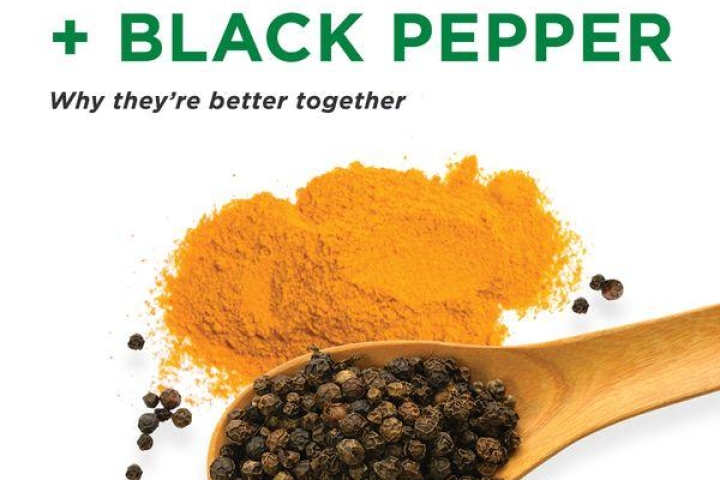BUSTED: Top 4 Myths of Probiotics!
Incorporating a probiotic into your nutritional regimen is an excellent strategy for supporting your digestive and immune health and enhancing your overall wellness. However, with the abundance of information about probiotics and numerous products claiming to be the best, it can be challenging to discern what is accurate. What are the essential facts you should know about probiotics? Let's debunk some common myths surrounding them.
1. Some Probiotic Strains Are Better Than Others
Are some probiotic strains superior to others? The answer is both yes and no. Probiotics are beneficial bacteria that reside in your intestinal tract, which contains trillions of organisms and potentially hundreds of different strains of good bacteria. Consequently, it is impossible to definitively state which probiotic strain is the "best" as it greatly varies from one individual to another.
Each person’s gut microbiome is unique, influenced by factors like diet, genetics, climate, age, and the acidity of our digestive tracts, among others—and our microbiomes are constantly changing.1 The ideal probiotic for you also depends on the reasons you are using it, since different probiotic strains may benefit your health in various ways.
What is perfect for you will differ from what is perfect for your neighbor. This variance is a major reason why many people prefer probiotic combination formulas like BubbForest Ultra Probiotic Complex, which includes 25 different probiotic strains for digestive and immune support, over supplements that provide only one or two strains.
Marketing can complicate the selection of a probiotic. For instance, a company might highlight a study suggesting that their product’s single strain is the "most important" or "best strain" available. This can mislead even health professionals. While studies are valuable for demonstrating a product’s benefits, some are designed to display a particular result, which could be achieved with virtually any probiotic. When it is not publicly disclosed that any strain could have been used to achieve the same effect, it falsely distinguishes the product as unique.
In conclusion, the best probiotic for you might not be the best for someone else. If you need assistance in finding the right probiotic for your needs, consider reading The 4 Steps to Choosing a Probiotic for You.
2. All Probiotics Need to Be Refrigerated
Do all probiotics need refrigeration? While some do, this requirement is not as prevalent as it once was. The need for refrigeration varies by product, so it's crucial to check the label. If the label makes no mention of refrigeration, you can assume the product is shelf-stable and does not require it.
Decades ago, it was commonly believed that unrefrigerated probiotics would likely perish. However, today's technological advancements ensure most probiotics remain stable at room temperature.
Despite this, some people remain skeptical of non-refrigerated probiotics, leading certain companies to continue offering refrigerated options, perpetuating this myth.
Simply read the bottle for guidance. If it instructs refrigeration, refrigerate it; if not, don’t. Choosing a refrigerated probiotic ultimately comes down to personal preference.
3. If You Can’t Feel Them Working, Probiotics Are Dead
Probiotics, like many natural supplements, do not always produce immediate results. The time it takes for probiotics to take effect varies depending on your unique microbiome and the specific probiotic you are taking. It may take a few weeks of regular use to observe changes, although some might notice benefits sooner.
In the meantime, how can you determine if your probiotics are active? If you're unsure about the viability of your probiotic pills or suspect they might be expired, an effective method to test them is by making yogurt. Numerous online recipes guide you through making yogurt from a probiotic capsule, offering a reliable way to verify the bacteria's viability.
Here is an excellent vegan yogurt recipe using coconut:
Vegan Coconut Yogurt Recipe2
Ingredients
- 3/4 to 1 cup coconut water
- 16 ounces (453 grams) raw coconut meat
- Probiotic powder (approximately 2 capsules worth)
Instructions
1. Blend the coconut water and coconut meat until smooth.
2. Add probiotic powder (open two of the probiotic capsules you want to test and pour the contents into the blender) and blend briefly.
3. Pour into a bowl (or jar) big enough to allow some room for expansion. Cover gently and let the coconut yogurt culture on your counter for 8 to 16 hours. The longer it cultures, the more it will resemble traditional yogurt in taste.
4. Once ready, enhance it with sweeteners, vanilla extract, fresh fruit, etc.
NOTE: Yogurt cultures faster in warmer climates, so the culturing time may vary. If you live in a cooler climate, consider using a temperature-controlled yogurt maker. Once cultured, this yogurt can be stored for up to seven days in a sealed container in the fridge.
4. I Don’t Need Probiotics Because I Eat Yogurt
This assumption can be misleading. While yogurt is produced with bacterial cultures, not all yogurts contain active probiotics by the time they reach store shelves. Some are heat-treated after fermentation, killing the live cultures. Always check the yogurt's label to ensure it contains live, active cultures, though even then, the quantity may not be sufficient for significant health benefits.
If your yogurt does contain active probiotics, consider how much beneficial bacteria you're actually consuming. Some brands invest heavily in short-term studies to demonstrate benefits from their yogurt, yet these studies often involve participants consuming yogurt multiple times daily.
Unless you plan to eat several servings of yogurt daily, you're unlikely to experience comparable benefits or obtain regular digestive support. Moreover, be wary of added sugars in yogurt, which add unnecessary calories.
In contrast, probiotic supplements provide precisely measured daily doses of probiotics in much higher concentrations, without the extra calories associated with yogurt consumption. If consistent maintenance is your goal, a high-quality probiotic supplement might be a more suitable option.
What's your experience? Do you regularly take probiotics? What results have you noticed?
Explore more about probiotics in our other Probiotic 101 articles, including The 4 Steps to Choosing a Probiotic for You, Translating the Language of Probiotics, and Trust Your Gut Health: Build a Healthier Gut with Probiotics.
About Bushra Hassan, MBA, RD & LDN
Registered Dietitian & Licensed Dietitian Nutritionist, BubbForest Health
Bushra is an expert in supplement development, nutrition education, wellness coaching, and product brand management. Her work focuses on diet and nutrition, digestive health, and integrative and functional medicine. She enjoys baking, trying new restaurants, and exploring the beautiful city of Chicago.
Sources
1 Your Changing Microbiome. Genetic Science Learning Center. The University of Utah. http://learn.genetics.utah.edu/content/microbiome/changing/ (Accessed 03/15/2018)
2 Quickie Raw Vegan Coconut Yogurt Recipe – 3 Ingredients. Kristen Suzanne’s Food, Travel, Lifestyle. http://kristensraw.com/blog/2012/11/15/quickie-raw-vegan-coconut-yogurt-recipe-3-ingredients/ (Accessed 03/15/2018)
3 Are all yogurts ‘probiotic yogurts’? California Dairy Research Foundation. http://cdrf.org/2016/08/12/yogurts-probiotic-yogurts/ (Accessed 03/15/2018)
*These statements have not been evaluated by the Food and Drug Administration. These products are not intended to diagnose, treat, cure, or prevent any disease.





Leave a comment